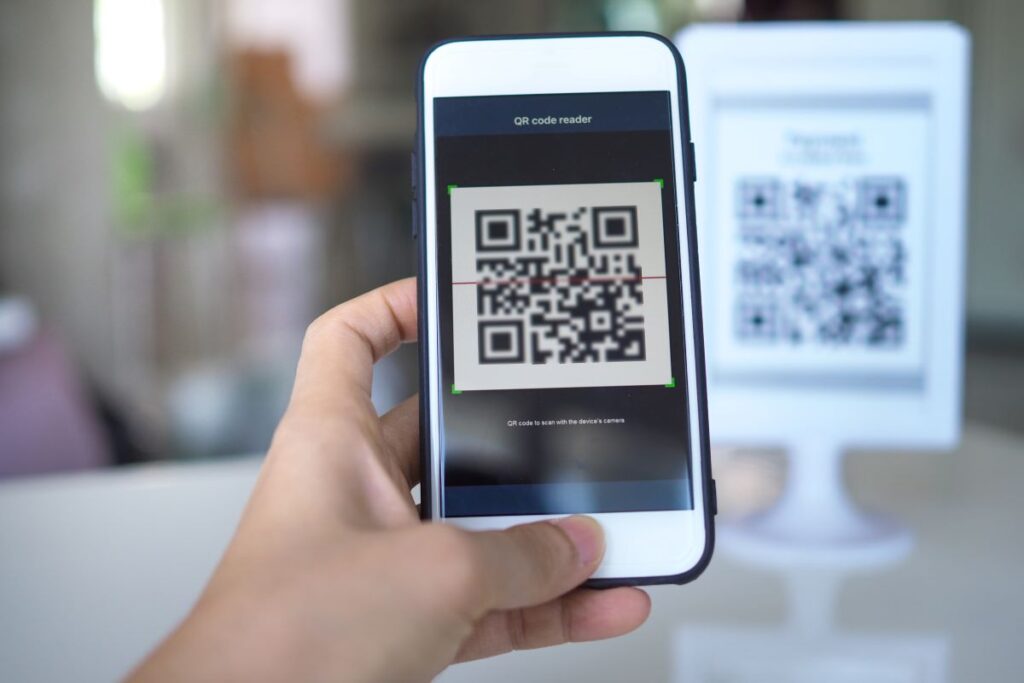Do you remember the last time someone handed you a complementary card, and behind it, you noticed a square-shaped, black and white figure? QR or quick response code is the most recent trend in marketing. Most businesses now insert these codes on their; posters, cards, flyers, websites e.t.c They have been observed to increase sales and customer feedback in recent years. Like barcodes, the QR codes are numerical, binary, or even alphanumeric forms of coded data. QR codes have been defined to be the 2D form of barcodes.
Although they do not necessarily tell where a product was made, they describe the item or service and its manufacturer or renderer. QR codes are represented as black squares and dots on a white background and these ‘figurative expressions’ conceal content that specific devices can pick up. Like Barcodes, quick response codes can be scanned by machines or cameras of android phones, and the information is translated into a meaningful and understandable language. Few years before now, QR codes were remote in the business world, but today they have gained insurmountable repute because more business owners are incorporating QR Codes as a strategy for marketing. QR codes are; trackable, efficient, actionable, and offer a sustainable solution to online and offline surveys. These codes are helpful whenever employers need to get feedback from their employees or even when you need to respond to your customers.
How To Make QR codes For Surveys
To obtain a QR code aided survey, you could employ either of the following methods;
1. Using a Rich Text QR Code to capture responses.
Creating a Rich Text QR Code for capturing open-ended text responses involves leveraging Scanova’s QR Code Generator platform. Here’s a step-by-step guide on how to execute this process effectively:
- Sign Up for Scanova’s QR Code Generator: Start by registering on Scanova’s website to access their QR Code Generator. You can sign up for a free 14-day trial, which allows you to explore the platform’s features and capabilities.
- Define Your Survey Questions: Once you’ve signed up and logged into Scanova, navigate to the survey creation section. Begin by defining the questions you want respondents to answer in your survey. You can customize the survey with open-ended text fields to gather detailed feedback or opinions.
- Generate a Custom Page QR Code: After finalizing your survey questions, proceed to generate a Custom Page QR Code. This type of QR code enables you to link directly to a custom-designed web page where respondents can input their responses.
- Customize the QR Code: Customize the appearance of your QR code to align with your brand identity and make it visually appealing. Scanova provides options to add colors, logos, and design elements to the QR code, enhancing its attractiveness and recognition.
- Download and Deploy the QR Code: Once you’re satisfied with the design, download the QR code in high resolution. You can then incorporate the QR code into various marketing materials such as posters, flyers, brochures, or digital platforms like websites and emails.
- Distribute the QR Code to Respondents: Share the QR code with your target audience through appropriate channels. Encourage respondents to scan the QR code using their smartphones or devices to access the survey and submit their responses seamlessly.
Benefits of Using Rich Text QR Codes for Surveys
- Enhanced User Experience: Rich Text QR Codes provide a user-friendly interface for respondents to input detailed text responses, fostering a positive survey experience.
- Real-Time Data Collection: Scanova’s platform allows you to access real-time data analytics and track survey responses as they come in, enabling prompt analysis and decision-making.
- Customization Options: Customize the survey design and QR code appearance to reflect your brand identity and engage respondents effectively.
- Streamlined Feedback Collection: By utilizing QR codes, you streamline the process of collecting feedback and facilitate instant interaction between respondents and your survey content.
Incorporating Rich Text QR Codes into your feedback collection strategy empowers you to gather valuable insights and opinions from your audience effectively. Leveraging Scanova’s features ensures a seamless and engaging survey experience for respondents, ultimately driving actionable data and informed decision-making for your business or organization.
2. Using an online survey tool and a QR code generator.
- Choose an Online Survey Tool: Start by selecting an online survey tool that suits your requirements. Options range from free platforms like Zoho Survey or Google Forms to premium tools such as SurveyMonkey, which offer more advanced features and customization options.
- Create Your Survey Form: Once you’ve chosen the survey tool, proceed to create your survey form. Define the questions you want to include in the survey and customize the layout and structure according to your preferences. Most survey tools provide intuitive interfaces for designing surveys efficiently.
- Generate a QR Code with Scanova: After finalizing and publishing your survey form, navigate to Scanova’s QR Code Generator platform. Click on the “Create QR Code” option and select the “Website URL QR Code” category.
- Enter the Survey Link: Copy the URL link of your survey form from the online survey tool. Paste this link into Scanova’s QR Code Generator interface. You can also give a title or name to the QR code for easy identification.
- Customize and Design the QR Code: Customize the appearance of the QR code to align with your branding and attract respondents. Scanova allows you to add colors, logos, and design elements to the QR code, enhancing its visual appeal and recognition.
- Download and Deploy the QR Code: Once you’ve customized the QR code, download it in high resolution. Incorporate the QR code into your marketing materials, such as printed materials (posters, flyers, brochures) or digital platforms (websites, emails, social media).
Benefits of Using Online Survey Tools with QR Codes
- Flexible Survey Design: Online survey tools offer a range of customization options, allowing you to create engaging and interactive survey forms tailored to your audience.
- Data Collection and Analysis: Survey tools provide robust features for collecting, analyzing, and interpreting survey responses in real-time, enabling data-driven decision-making.
- Accessibility and Convenience: QR codes streamline the process of accessing survey forms, making it convenient for respondents to participate using their smartphones or devices.
- Integration with QR Code Marketing: Integrating QR codes into survey campaigns enhances user engagement and encourages participation, leading to higher response rates and valuable insights.
By combining the capabilities of online survey tools with QR code technology, businesses and organizations can leverage efficient feedback collection strategies and gain actionable insights from their target audience. This approach facilitates seamless interaction between respondents and survey content, ultimately driving informed decision-making and improving customer satisfaction.
Conclusion
The QR code is a recently discovered route for advancing marketing and easing the process of feedback collection; hence every growth-minded business person should seek to take advantage of it.


